Speak to one of our experts now about this offer
Embark on a real adventure: Namibia offers an African experience like no other.
Wind through sun-baked deserts of towering red dunes, travel past shipwrecks on the wave-battered Skeleton Coast and navigate through canyon-speckled plains carved with prehistoric rock art. Along the way discover Namibia’s unique treasures, be it vast salt pans decorated with petrified trees, million-star-studded skies or colonial German seaside towns where you can sip Bavarian beer and gorge on bratwurst. Best of all, you can traverse this eye-popping wilderness at your own pace on a 4x4, self-drive road trip or opt for a private guided tour that's tailored for you.
However, it's the warm encounters with Namibia’s diverse people that will really make your trip. One day you could be weaving makalani-palm baskets in an Ovambo homestead; the next, making fire with Himba women clad in signature ochre body paint. Stop to meet the original custodians of the Kalahari, the semi-nomadic, spear-hunting San people, who descend from some of the earth’s oldest humans.
Namibia Safaris
Safaris in Namibia are all about framing that perfect Soussesvlei view: an oryx crossing the parched riverbed with turmeric-toned sand dunes as a back drop; or about marvelling about how creatures have adapted to their arid home up in Damaraland, going for days without water and going for miles to find food. Namibia safaris are truly extraordinary but they’re usually part of a more extensive tour that combines city stays, desert adventures and Skeleton coast explorations. Variety's the spice of life after all.
Namibia Regions
Our recommendations for the best places to visit in Namibia
Our favourite trips & safaris
Holidays in Namibia
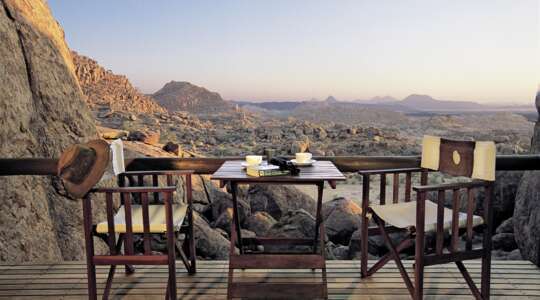
- Damaraland
Hidden amongst vast ochre boulders in Namibia’s Damaraland, you will find Mowani Mountain Camp.
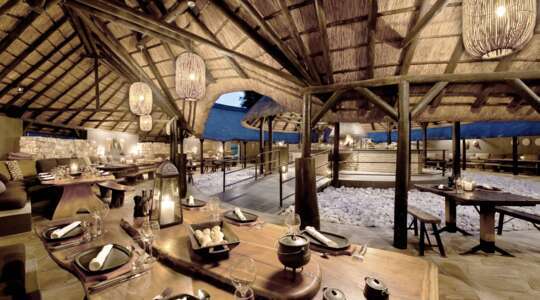
- Etosha
Mokuti Etosha Lodge is a contemporary interpretation of Namibia’s landscape.
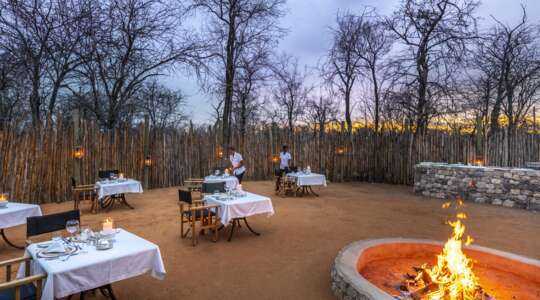
- Etosha
In the local Herero language, Onguma means ‘the place you don’t want to leave’ which perfectly describes Forest Camp.
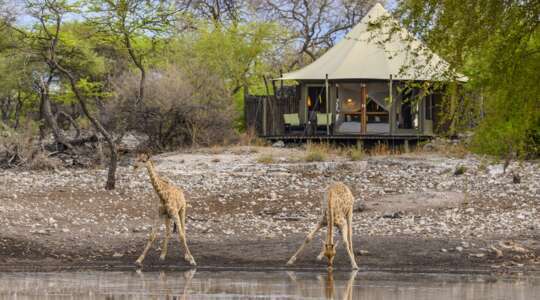
- Etosha
Onguma Tented Camp offers a true African glamping experience.
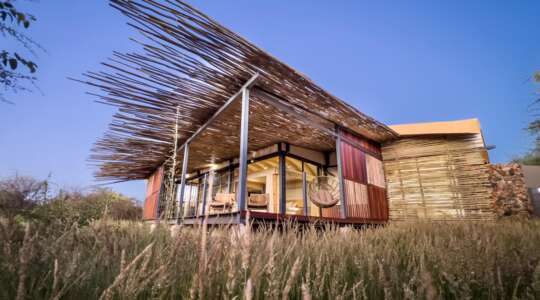
- Etosha
Situated on one of Namibia’s largest private reserves, Ongava Anderssons Camp is a luxurious camp with a strong focus on eco-tourism.
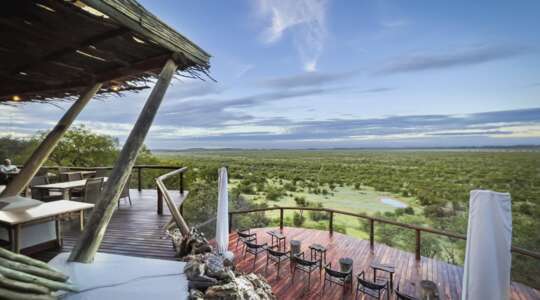
- Etosha
Ongava Game Reserve is a 30,000-hectare nature reserve made up of former cattle ranches located next to Etosha National Park.
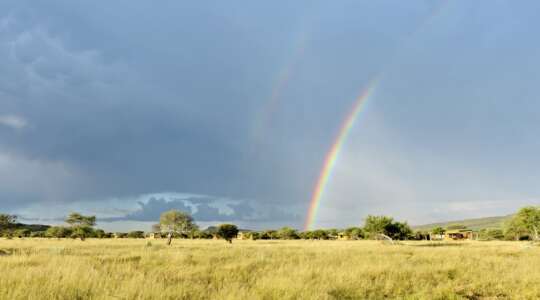
- Ojiwarongo & Okonjima
- 3 Star
Stay among leopard-spotted savannahs at Okonjima Plains Camp
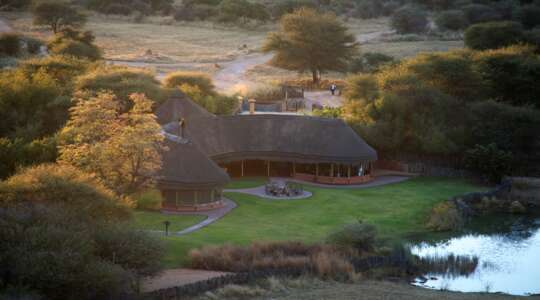
- Ojiwarongo & Okonjima
Okonjima Bushcamp lies on the Okonjima Nature Reserve, a former cattle ranch that’s now a conservation success story and home to the AfriCat Foundation.
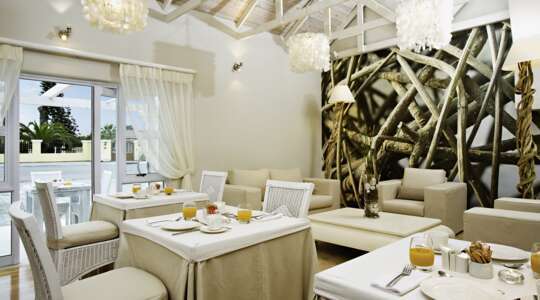
- Swakopmund
- 3 Star
A boutique guest house, just a short walk from the beach
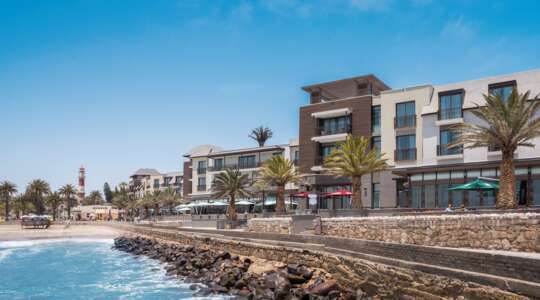
- Swakopmund
The Strand Hotel combines German old-world charm with stylish and contemporary interiors.
You may also like
Namibia safaris are a whole different kettle of fish. There’s plenty of wildlife to scope out sure, but there’s nowhere with quite such dramatic – and one-of-a-kind – landscapes.
Discover the ancient, natural and cultural delights of an untouched land with a group or independent tour of Namibia
Relatively untouched compared to some of its neighbouring countries, Namibia is a joy to explore for travellers with a keen interest in the remote delights of this little-explored land. You can scale towering dunes, walk on ancient clay pans and visit outstanding national parks on a small group tour or independently on a tailor-made itinerary created by us according to your needs.
Catamaran Cruise
Experience Namibia’s diverse marine life on a catamaran cruise of Walvis Bay. Set on the rugged Skeleton Coast, the bay is a haven for pelagic birds and the marine Big Five: whales, dolphins, mola mola, leatherback turtles and seals. You will leave early in the morning, sailing out to Pelican Point, which has a striking lighthouse and a colony of around 60,000 Cape fur seals – you can hear them barking as you approach.
From there, pass oyster farms, huge ships and oil rigs as you sail through the bay. You may spot bottlenose, dusky and Heaviside's dolphins jumping through the waves. If you’re lucky, maybe an albatross will swoop overhead and or you may catch sight of a turtle or giant mola mola. Also known as a sunfish, adults can weigh up to 1,000 kilograms.
Most whale sightings occur between July and the end of October when various species migrate. During that time, you may see whales daily, from southern rights and grays to pygmys and humpbacks. The skippers focus on the educational aspect of the tour and will teach you all about the different animals. Following international regulations, the animals are not crowded and are observed from a distance.
If the wind comes up, the sails will be hoisted and the engine switched off. Finish the tour enjoying sparkling wine and oysters on seafood platters with fresh bread, desserts and drinks.
Living Desert Tour
Meet the unique creatures of the Namib Desert on this educational tour. The aim is to get people to see the dunes with a different eye and realise they’re not just a pile of sand, they’re home to incredible wildlife. Departing from Swakopmund, you’ll be taken in a 4x4 to the coastal dune belt just outside of town.
During the drive, your guide will be looking for tracks and signs in the dunes. Looking for scorpions, spiders and the group informally called the little five: the palmato gecko, sand-diving lizard, fog-basking tok-tokkie beetle, sidewinder snake and chameleon. These secretive animals are tough to spot without the help of an experienced local guide.
When something is spotted, you’ll get a closer look as your guide tells you all about the special adaptations each creature has to survive in this inhospitable environment. You never know what you’re going to encounter in the desert though. End the trip with some exciting big dune driving in custom-built safari vehicles, it’s like a rollercoaster ride.
Marine desert adventure
Explore the contrasting landscapes of Namibia, beginning with a hunt for some of the most fantastic aquatic wildlife. Enjoy a hot drink on board as you approach a Cape fur seal colony and the lighthouse at Pelican Point. Between July and November, you might be able to spot southern right and humpback whales. Taste fresh oysters served with sparkling wine before visiting Sandwich Harbour Lagoon (weather permitting), or heading to the top of a dune for wonderful desert views.
Sandboarding
Soar down the Namib Desert’s dunes on this sandboarding adventure. The tour starts in Swakopmund, where you will be driven eight kilometres into the desert. The landscape is incredible, with dune-top views of the world’s oldest desert on one side and the Atlantic Ocean on the other. It’s brilliant for photos; sometimes, you’ll even spot palmato geckos, beetles and chameleons hiding in the sand.
Expert instructors start with a safety briefing and then teach you the techniques for lie-down and stand-up boarding, which is a bit more technical. Quality snowboards that have been customised to glide perfectly across the sand are used. It’s an exhilarating feeling, rocketing down the dunes - when you’re lying down, you can even reach speeds of 50km an hour!
Afterwards, head down to the beach to watch the waves and have a picnic. You’ll enjoy cold Namibian beers, sandwiches and a lunch platter. As well as an adrenaline rush, the tour also gives you the rare opportunity to get out of your car and immerse yourself in the extraordinary scenery of the Namib Desert.
Skeleton coast scenic flight
View Namibia’s Skeleton Coast from the best seats in the house on this scenic flight. Loop from the seaside resort of Swakopmund past mountains, rivers, little towns and a staggering uranium mine before reaching the untouched beauty of the Skeleton Coast. Haunted by the remains of whales and shipwrecks, you’ll sweep over this beautifully harsh landscape where the vast sea ripples against the burnt orange of the desert in this intriguing juxtaposition of nature.
Windhoek and Penduka tour
After being collected from your hotel, drive towards the city centre stopping at the distinct looking Germanic Christuskirche. It’s overlooked by the Independence Memorial Museum where you will climb to the top and take in the cityscape. Next, walk to Parliament and its peaceful green gardens before visiting the old Cape-Dutch style railway station dating back to the colonial era. Afterwards head to the colourful Post Street Mall, a popular shopping street also renown for displaying around 30 meteorite chunks discovered in Namibia.
There’s time for souvenir shopping at an open-air craft market before travelling towards the township of Katutura. On the way, drive past the Old Location (now a modern suburb), a black settlement created in 1912 before its community were forcibly relocated to Katutura. Stop at Penduka Women Project, a non-profit project on the shoreline of the Goreangab Reservoir where women hailing from Katutura use their skills as artisans to weave beautiful products such as canvas bags and embroidered towels. End by touring Katutura itself to learn of its politics, meet the people and hear some of the local language.
Explore Damaraland: peaks, petroglyphs and desert elephants
Damaraland is unlike anywhere else in Namibia, home to table-topped peaks carved with ancient petroglyphs and dry river beds where desert elephants roam. Explore Damaraland’s highlights, starting with its collection of ancient rock art in Twyfelfontein, a UNESCO World Heritage Site. As Africa’s most extensive rock art collection, you can see over 2,500 animal shapes and geometric designs carved over thousands of years by Namibia’s native bushmen.
As you drive through Damaraland, your guide will point out its signature landmarks; geological formations carved by wind and sand over centuries. There’s a set of impressive dolerite pillars nick-named the organ pipes, a petrified forest of trees frozen in sediment over 200 million years ago and the Matterhorn-shaped volcanic peak, Spitzkoppe. Namibia’s highest mountain, Brandberg, is gorgeous at sunrise and sunset, when it appears to glow, earning itself the title Fire Mountain.
You may see Namibia’s desert elephants, who live in dry riverbeds such as the Huab, Hoarusib and Uniab. These ephemeral rivers flood during rains and are lined with vegetation like ana trees, a vital food source for elephants. Classed as endangered, only an estimated 150 desert elephants are now left in the wild. If you’re lucky enough to spot the elephants your guide will point out the unique adaptations that allow them to survive in the desert, including larger feet to stop them from sinking into the sand.
Damara Living Museum visit
Learn about Damara culture at this fascinating living museum. Namibia is home to some of the world’s oldest communities, including the San, Ovambo, Herero and Damara people. These hunter-gatherer bushmen have roamed the country for centuries and are an essential part of Namibia’s heritage. What’s unique about the Damara people is that their culture was almost completely obliterated by colonisation but has been brought back to life by this living museum.
The museum was created in 2010 by Hansbernhard Naobes, with help from Namibia’s Living Culture Foundation. The plan was to reconstruct this forgotten culture and provide employment for the modern-day Damara community. It’s set just 10km from Twyfelfontein, an area famed for its ancient rock carvings, so the museum is an ideal stop on a Damaraland itinerary.
During your visit, you’ll tour a traditional Damara village which has a blacksmith for making tools and weapons and a tannery for clothing. See how women make jewellery and learn how to make a fire. The bushwalk is a highlight; you’ll help forage for edible and medicinal plants and watch how men set up the traps and snares for hunting. Join in with songs, dance and traditional games – it’s a unique cultural experience you’ll never forget.
Explore Etosha, the jewel in Namibia’s safari crown
If you’re craving a safari, there’s no better place in Namibia than Etosha National Park. The country’s oldest conservation area is home to 114 species of mammals and 350 bird species. What’s really special about Etosha though is its spring-fed waterholes, which draw animals from far and wide, especially during the dry season from June to November.
Etosha is good for a self-drive adventure, guided tour or the individual lodges also offer full and half-day safaris with their guides, who’ll know all the best waterholes and wildlife-watching destinations in the park. Perhaps take a break from behind the wheel or your guided tour vehicle and enjoy a ride in an open-sided 4×4, perfect for photographing animals and Etosha’s vast landscapes. Your guide will help you spot everything from giraffes and elephants to big cats and rhinos, as well as plains game like zebra, oryx and the rare black-faced impala.
There’s more to Etosha than just its diverse wildlife; the baobab-studded plains are covered with over 20 types of vegetation. Then there’s the Etosha salt pan, which is Africa’s largest and visible from space. In fact, the local Ovambo people refer to Etosha as the Great White Place after this geological marvel – traversing the pan is like travelling across the surface of the moon, with clouds of white dust flying up in your wake. While the dry season might be best for waterhole sightings, during the wet season the pans flood, creating mirrored lagoons that attract migratory birds, including flocks of flamingos – it’s quite a picture.
Track endangered rhinos and pangolins at Okonjima
Track endangered rhinos and pangolins with the help of the AfriCat team and anti-poaching units at Okonjima. You’ll move quietly on foot, getting up close to rhinos as they graze or lie in the shade. At Okonjima, they are also lucky to have a population of ground pangolins, one of the four pangolin species living on the African continent.
It’s an incredible feeling being out in the bush near these magnificent rhinos, immersed in nature. You’ll get to ask the experts about the species and how they’re protected in this 22,000-hectare reserve.
Pangolins have become a hot topic over the last 15 years as the most highly-trafficked animal in the world. Along with the AfriCat Foundation, they conduct research for conservation purposes and share it with other pangolin projects worldwide.
To track the pangolins, you will need to head out very early in the morning. You might be woken up at 2 am with a to-go cup of coffee, then you’ll venture into the bush with researchers and the anti-poaching unit. If you’re fortunate enough to locate a pangolin, you will observe them from a respectful distance in silence so as not to disturb the animals, which are classed as a vulnerable species. It’s an amazing experience to walk through the bush at night with a headlamp on, searching for these scaly prehistoric animals.
Okonjima game drive
Take game drives in Okonjima Nature Reserve to spot leopards and endangered species. Okonjima is also home to the AfriCat Foundation, which has been researching leopards here since the 1990s. Some of the leopards are fitted with tracking collars that allow them to protect and monitor the population while they roam freely within the reserve.
The reserve sprawls over 22,000 hectares of mountains, plains and riverine thickets where a strong population of leopards thrives. They’re such elusive, stealthy animals that are difficult to find in places like Etosha, so it's always a highlight when you catch a glimpse of one at Okonjima.
Sightings aren’t guaranteed – the leopards might be sleeping in a thicket or guarding their kill up in a tree – but the tracking collars mean it’s a lot easier to spot them than on a traditional safari.
If you do find a leopard, about fifty per cent of the time you’ll see a brown hyena nearby hunting for food scraps. They’re another key species your guide will look out for, along with rhinos. Expert guides will tell you all about the species you encounter and the challenges they face. There are plenty of nature trails to enjoy in the reserve too, as well as night drives where you can spot everything from bat-eared foxes to owls and aardwolves.
Meet AfriCat’s rescued cheetahs
Learn about big cat conservation at the AfriCat Carnivore Care Centre, which is home to rescued cheetahs that unfortunately cannot be released into the wild. Perhaps they’re injured, elderly or arrived at the centre at such a young age that they’ve never learned to hunt. Now, they act as ambassadors for their species and live peacefully in up to 50-acre enclosures on the Okonjima Reserve.
The centre is a by-product of AfriCat’s rehabilitation programme, which was launched in the 1990s to rescue cheetahs and leopards from livestock farmers. Since then, the foundation has expanded with the aim of protecting all carnivores in Namibia. You can learn about AfriCat’s mission and predator programme at the information centre and clinic.
You’ll also get to see the cheetahs; there are only a few left in the centre, which is a good thing because they want to move away from keeping animals in captivity and show guests wildlife in its natural habitat instead. They live in a stress-free environment, are fed a balanced diet and receive annual veterinary health checks. It’s a great opportunity to get up close to these fantastic beasts.
Fat Bike Tours
Enjoy a Namib Desert cycling adventure on this unique fat bike tour. The trip starts in Swakopmund where you’ll be kitted out with a fat bike, which has thick tyres that can travel over sandy terrain. They’re eco-friendly and less invasive than cars or quad bikes. Set off with your guide, passing Swakopmund’s German-colonial architecture, and follow a riverbed into the desert. Cycle leisurely through rolling dunes, soaking up the views and stopping to photograph the scenery. There are also some adventurous downhill sections to tackle if you’re craving a dose of adrenaline.
Cycle leisurely through rolling dunes, soaking up the views and stopping to photograph the scenery. You can see back down into Swakopmund and across the Atlantic, with the never-ending sands of the Namib Desert stretching in the other direction. You’ve got the contrast of the yellow, orange and even black dunes, all set against the blue sky. Namib means “vast place” in the local Nama language, which perfectly describes the view.
We use one of only a few tour companies with a permit to operate in this area of the National Park, so it often feels like you’re alone in the desert. As you cycle, you might spot a gecko or a snake or even a roaming desert elephant. Your guide will tell you stories about the desert and Swakopmund.
Guests love the excitement of being able to ride in this extreme environment. The bikes are suitable for all, but if you’re not a confident cyclist, there are also e-bikes with fat tyres that you can use instead. Guests enjoy getting out of the car and to get some exercise. Out in the desert, there’s no pollution, just pristine nature as far as the eye can see.
Hot Air Ballooning over Namib Naukluft Park
The Sossusvlei region of Namibia is the perfect place to do balloon safaris. Take a 10-minute drive to the launch pad, where you can enjoy the spectacle of the balloon inflating and taking shape – a very magical event just before sunrise. After a briefing with your pilots, take to the air.
It’s an hour in the sky travelling wherever the wind takes you over oceans of sand and dramatic mountains. You will typically cover an average of 10 kilometres although some days as much as 30 kilometres depending on the strength of the wind. Meanwhile the crew sets up a beautiful champagne breakfast for when you land, including homemade breads, cheeses, smoked fish, salami pancakes, cereals and yogurts.
Soar over Sossusvlei on a scenic flight
Scenic flights are the best way to appreciate the immense size and beauty of Sossusvlei and the Namib Desert. Take off in a private plane or helicopter to soar over this UNESCO-listed landscape; you’ll get a birds-eye view of the desert below, an ocean of rippling sand that stretches as far as the eye can see.
The colours are incredible, especially in the morning and late afternoon when the sun paints the sand different shades, from pale yellow and warm honey to vibrant turmeric and blood orange. It’s a feast for photographers.
The route will usually take you over ancient Sesriem Canyon, which looks like a deep, snaking gash in the desert’s surface, then west to the dune corridor and Sossusvlei. This former dry riverbed is home to Namib’s most impressive dunes and you’ll get to circle some of the tallest, including Big Daddy, Elim and Dune 45. You’ll also notice Deadvlei, a clay pan where dozens of dead camelthorn trees sit stranded, preserved by the arid atmosphere. The landscape is otherworldly – it feels like you’re in a spaceship passing over an alien planet.
Your pilot will provide commentary, pointing out the landmarks below. Look out for famous fairy circles and herds of game as you fly. Trips can be extended to the Skeleton Coast, where the desert meets the crashing Atlantic – some of the most dramatic landscapes you can imagine. Below, you might spot bird and seal colonies, as well as diamond mining camps and shipwrecks as you circle back to the desert.
Discover Sossusvlei's sand dunes
Sossusvlei lies deep in the Namib Desert and is home to Namibia’s most iconic landmark: Deadvlei. Everyone wants to capture that perfect photo of Deadvlei’s black, skeletal camelthorn trees stuck in a carpet of white clay, backed by tangerine-coloured dunes and a blue sky. The Namib is the world’s oldest desert and recognised by UNESCO for its shifting sand sea, which is unique because fog from the Atlantic provides moisture for plants and animals to thrive. Look out for desert-adapted animals as well as Namibia’s national animal, the elegant oryx.
Just driving into the Namib Desert is a surreal experience. You’re surrounded by rippling sands that stretch from Angola all the way down to South Africa.
Stay in a lodge near Sesriem Gate so that you can head into the park before the sun comes up. Although you could drive yourself, taking a tour means you can travel with a local guide, who’ll take you to the best spots in Sossusvlei. This former riverbed – Sossusvlei means 'where the river ends' in the indigenous San language – features some of the tallest sand dunes on the planet. These include the 340-metre-tall Big Daddy, Dune 45 and Elim.
As the sun rises, watch shadows flicker over these towering dunes, the light painting them shades of orange, red, turmeric and gold. If you’re feeling active, scale one of the dunes for aerial desert views; at that time of day the sand is cool enough to trek up to the top, it’s quite a workout. If hiking isn’t your thing, take a dawn hot air balloon flight over Sossusvlei instead. The vast scale of the desert and its endless sands will render you speechless.
Explore Sesriem Canyon
Discover Sesriem Canyon, a geological gem in the middle of the Namib Desert. Although often overshadowed by nearby Sossusvlei, Sesriem is a natural treasure in its own right, located on the border of Namib-Naukluft National Park. Take a hike in the base of the 30-metre canyon and your guide will point out the multi-coloured layers of rock, which geologists have used to trace the history of the Namib Desert.
As you peer down into the orange depths, learn how water from the Tsauchab River carved the canyon over 15 million years. Early settlers in the area found this vital water source and used six (ses) leather ropes (riem) tied together to lower a bucket into the canyon and collect water, hence the name. Today, Sesriem is usually dry and will flood only after heavy rain, but when this does happen, you can enjoy a swim in this otherworldly environment.
Take a hike in the base of the canyon. It feels like you’re tunnelling through the earth. Sesriem is particularly beautiful at sunrise and sunset, when golden rays illuminate the rock, creating a warm, buttery glow. Sit atop the canyon with a cool sundowner, taking in views of Namib’s shifting desert sands.
Guided nature drive of Sossusvlei
Sossusvlei is known for its soaring sand dunes but there’s much more to discover on a nature drive. Head out with an experienced local guide from your lodge to explore the Namib Desert’s endless shifting sands. It might look barren but the desert is actually home to all kinds of wildlife that’s adapted to survive in this unforgiving environment. The landscapes are great for photography, ranging from orange-red sands to moon-like gravel plains and scorched yellow grass.
Morning nature drives will normally start at dawn, allowing you to watch the sunrise. Afternoon drives are the perfect way to end the day with drinks, watching the sunset over the desert.
During the drives, your guide will help you spot game like springbok, oryx and zebra, as well as hyenas and perhaps rarer creatures like the Karoo bustard and Grant’s golden mole. The dunes are an ecosystem all of their own, teeming with insects and reptiles you wouldn’t normally spot without an expert eye. If you’re lucky, you’ll get to see a cute gecko or chameleon.
The desert vegetation includes bony camelthorn trees, like the ones you’ll see in famous Deadvlei, succulents and bushes bearing yellow Nara melons. Near the coast, there are huge lichen fields that bloom in the rainy season and with help from Atlantic Ocean fog. Your guide will be on the lookout for the iconic welwitschia, which is known as the living fossil plant because it can live for thousands of years.
Photographic safari in the Namib Desert
Kanaan Desert Retreat is the perfect place to take a photographic safari. Set in a protected reserve in the Namib Desert, they are blessed with three different ecosystems: vast open grasslands, red-hued sand dunes and the Tiras Mountains. Whether you are a beginner or professional photographer, it's a perfect destination for landscape photography.
The Namib Desert is a paradise for photographers so it's no surprise they have had camera crews from the BBC, Animal Planet and National Geographic here to film and photograph the area’s scenery and wildlife.
The tours are led by Francois, a professional photographer and co-manager of Kanaan Desert Retreat. He will start by asking what kind of photos you want to capture so he can tailor the experience to your needs. The trip includes two three-hour drives, usually an early-morning drive and another at sunset, ending with a star photography session. You can get brilliant images of the Milky Way and twinkling constellations in the Namib Desert.
Guests have taken incredible pictures on the photographic safaris, particularly of the sunsets and sunrises. You can frame petrified trees in the foreground against a backdrop of the desert and mountains. Although the landscapes take centre-stage, you may occasionally encounter wildlife. Everyone from beginners to professional photographers are catered for and it's recommended to bring a wide-angle lens and a tripod to get the best shots.
Hiking in Fish River Canyon
Adventurous travellers will love hiking down into the depths of Fish River Canyon. You'll be guided on a full-day trek through the aptly-named Jelly Legs Gorge, a trail that takes you past epic viewpoints. It’s a challenging hike that involves traversing rock-strewn slopes and scrambling over boulders, but the reward is getting to experience the world’s second-largest canyon.
When you hike, you can see the changing layers of sediment up close, the different rock colours and elephant skin weathering. Along the way, there’s a chance of spotting some of Fish River Canyon’s endemic wildlife, including oryx, kudu and springbok, Hartman’s mountain zebra and the shy rock hyrax. You’ll also notice birds swooping above, including black eagles. The main focus on the walk, though, is the views and the geology. You'll also learn about the flora, which includes over 100 types of succulents and quiver trees which can be up to 300 years old.
Eventually, you will reach the rock pools at the bottom, where you can cool off with a swim in the heart of the canyon. Enjoy a picnic lunch before making the long climb back up to the lodge – it’s a strenuous eight-to-ten-hour journey all together. If you don’t want to tackle the climb, there are flat canyon rim walks you can take instead from the lodge. Walk them in the morning and late afternoon when the light and shadows play across the rocks, it’s spectacular.
Fish River Canyon sundowners and scenic drives
It’s not until you drive down into Fish River Canyon that you get a true sense of its size. As you descend into the world’s second-biggest canyon, you can clearly see the different layers of sedimentary rock, the colourful quartz and limestone minerals. You'll see the elephant skin rock weathering and the ancient petroglyphs left behind by San hunters.
On the way down, you'll stop at various viewpoints to photograph the canyon. Your guide will point out the endemic vegetation, which includes succulents and quiver trees. There’s a chance of spotting some of the canyon’s game, including springboks, kudus and oryx, as well as baboons and the shy rock hyrax. If you’re very lucky, you may see a brown hyena or a rare leopard.
The bottom of the canyon is carved by the Fish River, which flows during the rainy season from January to April. It’s a spectacular sight; you can see why the local Nama people believe the canyon was formed by a giant snake thrashing around. The river dries into a series of pools, which you can swim in. Enjoy a picnic while taking in the views – you'll feel tiny surrounded by this 500-million-year-old geological wonder.
The canyon-rim sundowner drive is a shorter option. Head off in the late afternoon, stopping at two viewpoints to photograph the canyon during golden hour when the light is fantastic. At the third viewpoint, set on a plateau, a table is set up with drinks and snacks, which you can enjoy while watching the sun sink over the canyon, transforming the colours of the rock and the sky.
Scenic drives in the remote Namib Desert
Explore the remote Namib Desert on a scenic drive. You’ll travel with a guide in a converted Toyota land cruisers. Head out at sunrise or sunset for three hours to the reserve’s top spots. Along the way, you’ll be surrounded by vast grasslands, the Tiras Mountains and rolling sand dunes and you’ll rarely see another vehicle.
The landscapes are the main draw here but you’ll also spot desert creatures as you drive. You’ll stop at waterholes where oryx, springboks and ostriches sometimes gather. If you head out for sunrise, you’ll enjoy coffee and rusks at a scenic viewpoint or sundowner drinks and snacks in the late afternoon. Watching the sun rise or set over the desert is an incredible experience; the sky turns pink and orange and the landscape glows.
You can also take scenic dune drives, which take place on the other side of Kanaan Desert Retreat. The landscape here is covered with shifting sand dunes – the Namib Desert has some of the oldest dunes in the world – dotted with petrified trees. Guests love the adventure of bumping over the dunes in a 4×4. If you’re keen to see the desert after dark, take a night drive which allows you to experience the star-studded night skies and spot nocturnal creatures such as foxes, owls, and striped polecats.
The Kalahari bushman experience
Experience the ancient culture of the Khoisan community, semi-nomadic bushmen whose ancestors have roamed the Kalahari for over 20,000 years. The Khoisan community are descendants of the oldest people on earth, so it’s incredible to come face-to-face with this historic way of life, hear the villagers’ distinctive clicking language and discover how they’ve survived in this barren desert landscape for centuries.
At Bagatelle Kalahari Game Ranch, they have developed close ties with many of the local bushmen families and now work with them to run respectful tours of their villages. This helps provide income for the Khoisan community and gives visitors a glimpse into their traditions, beliefs and lifestyle.
The experience starts with a morning walk to the village, accompanied by the Khoisan bushmen, who’ll show you around their traditional grass-and-mud rondavels. During the tour, you’ll collect water in ostrich eggs, watch the villagers set animal traps and see how women make beautiful pearl and ostrich jewellery. A favourite part of the tour is learning how the Khoisan forage plants and identify which ones to use for food and medicine.
Guests really enjoy this cultural experience and the chance to learn about Namibia’s heritage.
Kalahari Desert drives, horseback safaris and stargazing
When you stay at Bagatelle Kalahari Game Ranch, you’ll get the complete desert experience. Guests love morning and afternoon safaris through the 10,000-hectare reserve in the southern Kalahari, which features some of the highest dunes in the region, as well as salt flats and valleys dotted with acacia trees. To really immerse yourself in the desert, you can also ride one of the horses through the dunes with a guide. After dinner, join a local astronomer and peer through one of the state-of-the-art telescopes to see planets, star clusters and distant galaxies.
As well as sleeping among the dunes in luxury chalets, you’ll spend your days exploring them with expert guides. Along the way, your guide will point out various types of native vegetation and wildlife. Look out for desert animals, which can include everything from kudus and oryx to zebras, giraffes and ostriches, as well as a family of cute meerkats who live around the ranch. You’ll also get to visit three orphaned cheetahs, Ralf, Etosha and Tuano, who are cared for in a 12-hectare enclosure near the ranch – they work with the Cheetah Conservation Fund to protect the area’s endangered big cats.
You can also ride one of the American Quarter (cowboy) horses through the dunes with a guide. This gives you a unique perspective you just don’t get in a car. The stargazing experience completes the day. The clear, star-filled skies above the Kalahari are quite magical.
If you are embarking on a self-drive adventure across Namibia's vast landscape, wishing to go in search in some of the unique desert-adapted wildlife or looking for some thrill-seeking adventures, our travel guide will help guide you through the practicalities.
Namibian Dollar (N$/NAD) and the South African Rand (ZAR) is also legal tender
10-11 hours
80% of Namibians are Christian
13 recognised languages including Oshiwambo, Afrikaans, English and German
Getting Around
Namibia is one of Africa’s top road trip destinations and most tourists opt for a self-drive adventure. You’ll need an International Driving Permit for Namibia; cars drive on the left and the speed limit ranges from 120kph on the tarred roads to 60kph in national parks. Less than 20 percent of Namibia’s roads are tarred though, so be prepared to traverse miles of gravel, sand and rocky terrain. For that reason, it’s best to hire a four-wheel drive that has better clearance and can cope in these wild landscapes.
Namibia is a vast country with the second-lowest population density in the world after Mongolia, so you’ll often drive for hours without seeing a town. It’s essential to top-up your tank whenever you spot a petrol station and never drive at night to avoid animal collisions. Phone coverage can be spotty, so download an offline map and carry a paper map as a backup. To take a break from driving, enjoy guided safaris in national parks like Etosha; your guide will know the best places to spot wildlife.
If you prefer not to drive, ask our travel experts about hiring a private driver for your Namibia trip. You’ll travel in a sturdy, air-conditioned vehicle with an English-speaking guide who knows just how to traverse Namibia’s wild terrain. This might be a more expensive option but you’ll gain a deeper understanding of the country’s culture and landscapes by travelling with a local, who’ll know all the best places for a pit stop. This is an especially great option for families and group trips.
Read moreFood & Drink
Namibia is known for its meat-heavy cuisine, which features the usual chicken and beef as well as game meats like ostrich and impala. Meat is usually cooked braai (barbecue) style or in a stew called a potjiekos, with vegetables in scarce supply. However, vegetarians are also well catered for. Ethnic specialties include adventurous dishes like fried mopane worms and most Namibians eat oshfima, a millet meal porridge, as a daily staple. The coast offers fresh seafood, including sought-after Lüderitz oysters, hake and lobster nourished by the Benguela current. If you’re visiting in April and May, seek out rare Kalahari truffles.
Due to its colonial roots, you’ll also find plenty of German fare in Namibia, particularly in port towns like Swakopmund. Think schnitzel and sausages served with pickled cabbage, cream cakes and black forest gateaux. The German legacy extends to beer, which is made in Namibia according to Bavarian purity laws and celebrated during Oktoberfest. Common varieties include Windhoek and Tafel lagers. If you prefer wine, you’ll likely be ordering bottles sourced from neighbouring South Africa, while non-alcoholic fare includes rooibos (red bush) tea and sabdariffa juice, derived from hibiscus flowers.
Read moreShopping
Crafts and curios are the order of the day in Namibia. Typical souvenirs are hand-carved from wood or soapstone and range from figurines to bowls, tribal trinkets and beaded jewellery. If you’re after fabric, there’s plenty of colourful batik cloth on offer. It’s best to buy from local markets or villages to ensure goods are hand-made in Namibia and that your money goes straight into the local economy. Bargaining is expected, just do so with a smile and work up from half the quoted price until both parties are happy.
Namibia is also known for its exquisite diamonds, farmed in a restricted area in the southwest of the country and sold in high-end shops, usually in Windhoek. More affordable semi-precious stones like amethysts, tourmaline and topaz are also available and featured in jewellery across the country. If you choose to buy semi-precious stones make sure you have the correct supporting documentation. Top shopping spots include the Namibia Crafts Centre in Windhoek, large markets in Okahandja and in jewellery stores and art galleries in Swakopmund.
Read moreTipping
Is expected on safaris and most lodges will provide clear guidelines as to how much and when to tip. As a general rule, tip a private guide around N$100 per guest per day and put N$200 into the staff tip box at your lodge each day. Otherwise, tip porters N$20-30 and petrol pump attendants N$5-10; for that price they’ll also clean your windows and check your tyres and oil. When it comes to restaurants, it is common practice to leave at least 10% of the bill for great service.
Read moreEtiquette
Greetings in Namibia are important, so start with some small talk and a handshake – always use your right as the left is seen as unclean, the same goes for eating. Namibians dress modestly so it’s a good idea to do the same, wearing light clothes with good coverage to protect from the sun. Ask permission before taking photos of people and do not take them of government buildings, military personnel or any political demonstrations. If you’re visiting ethnic villages, be sure to accept any food or drink offered and pay ultimate respect to elders and avoid displays of public affection.
Read moreNamibia Weather
Apr - Oct
January
February
March
April
May
June
July
August
September
October
November
December

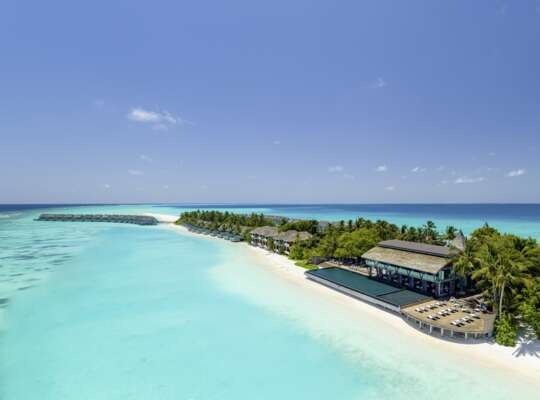
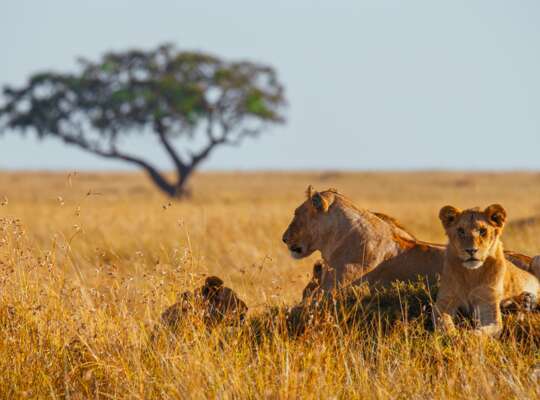
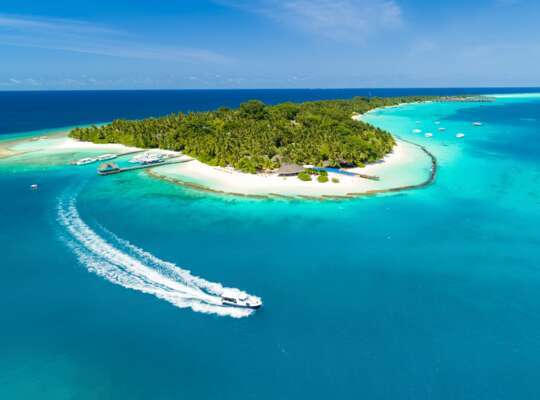
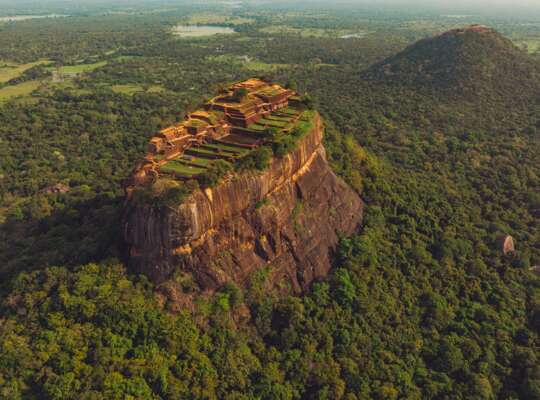
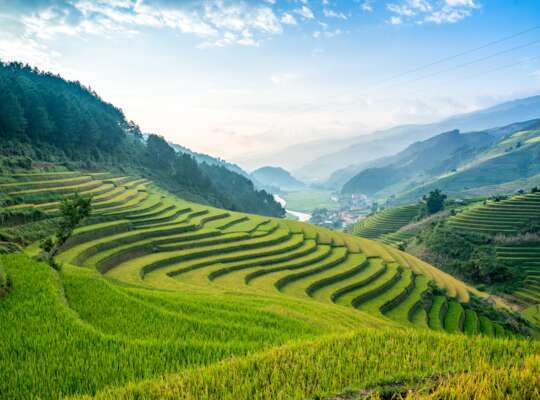
_w=636_h=896_pjpg.jpg?v=95eb7919dd068bd9580f2851174449b79059ddc5)
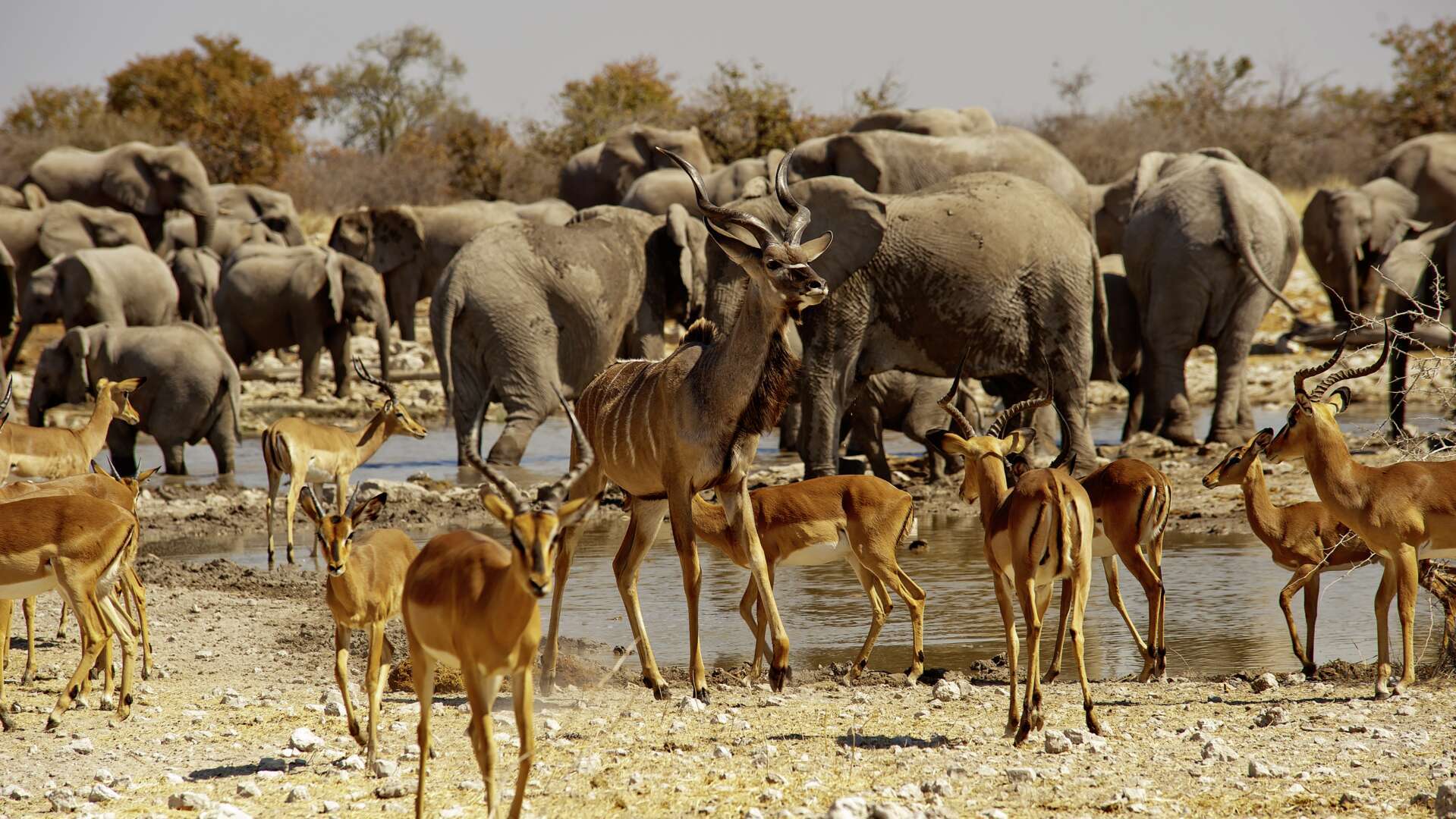
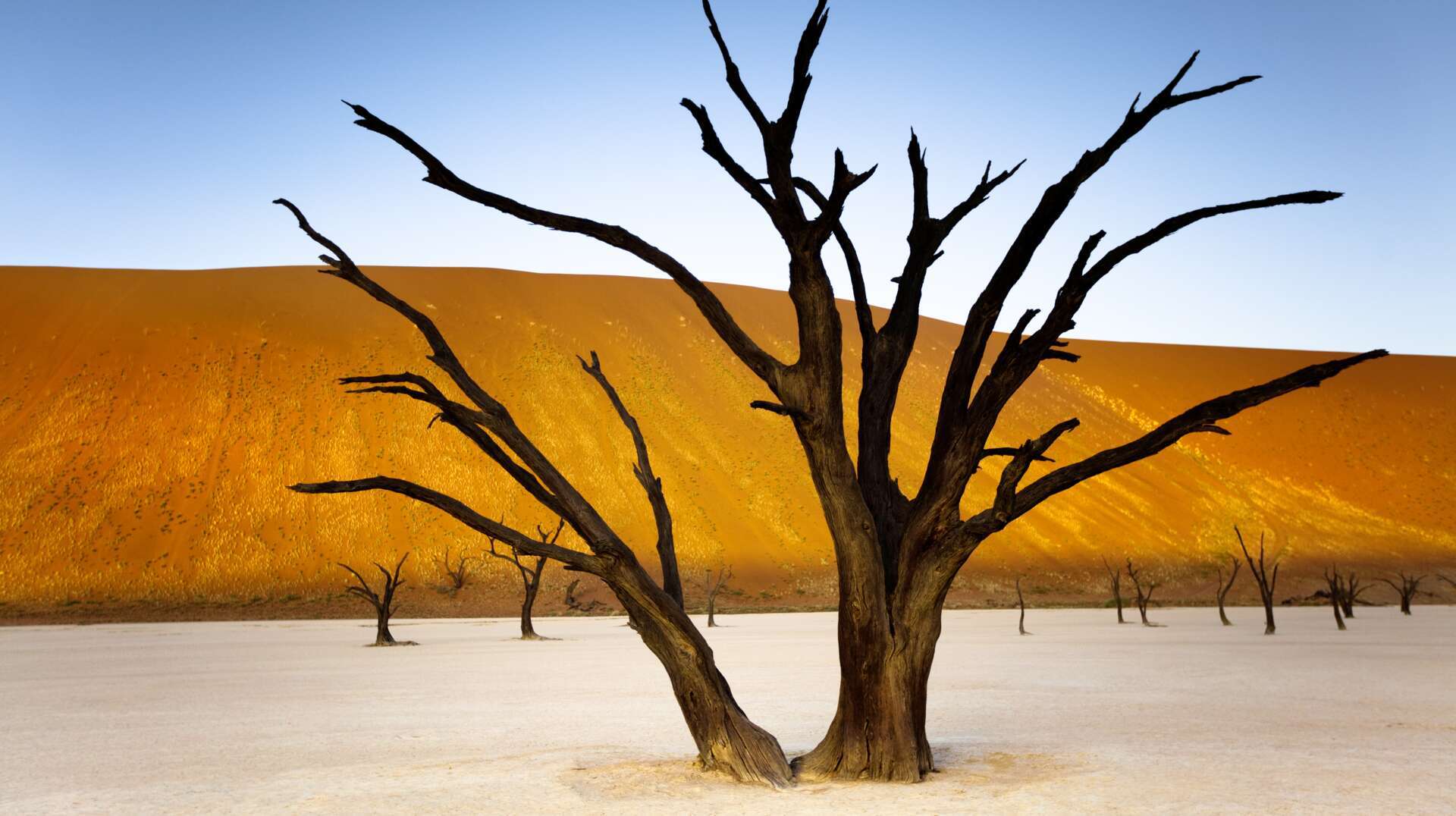
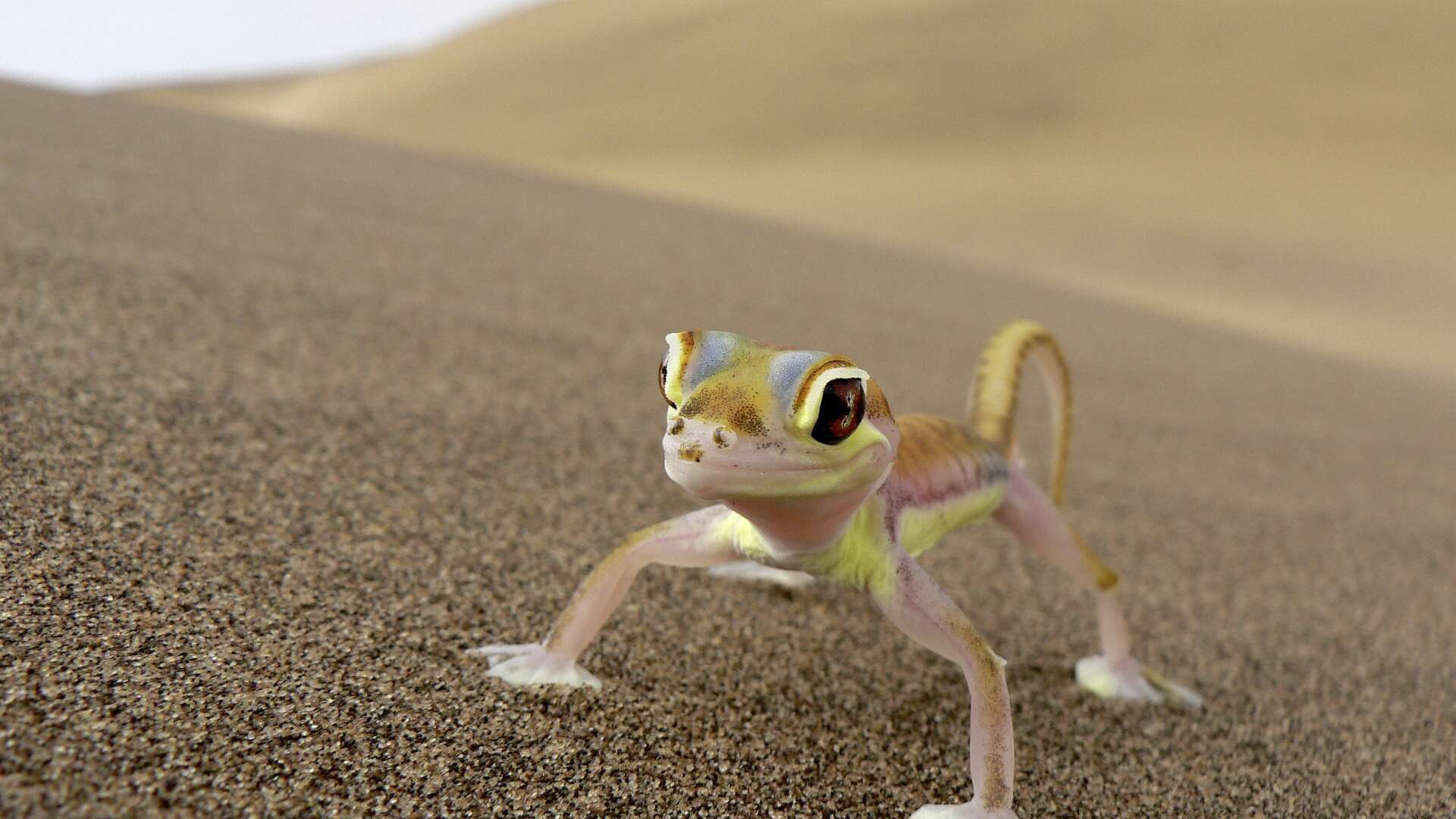
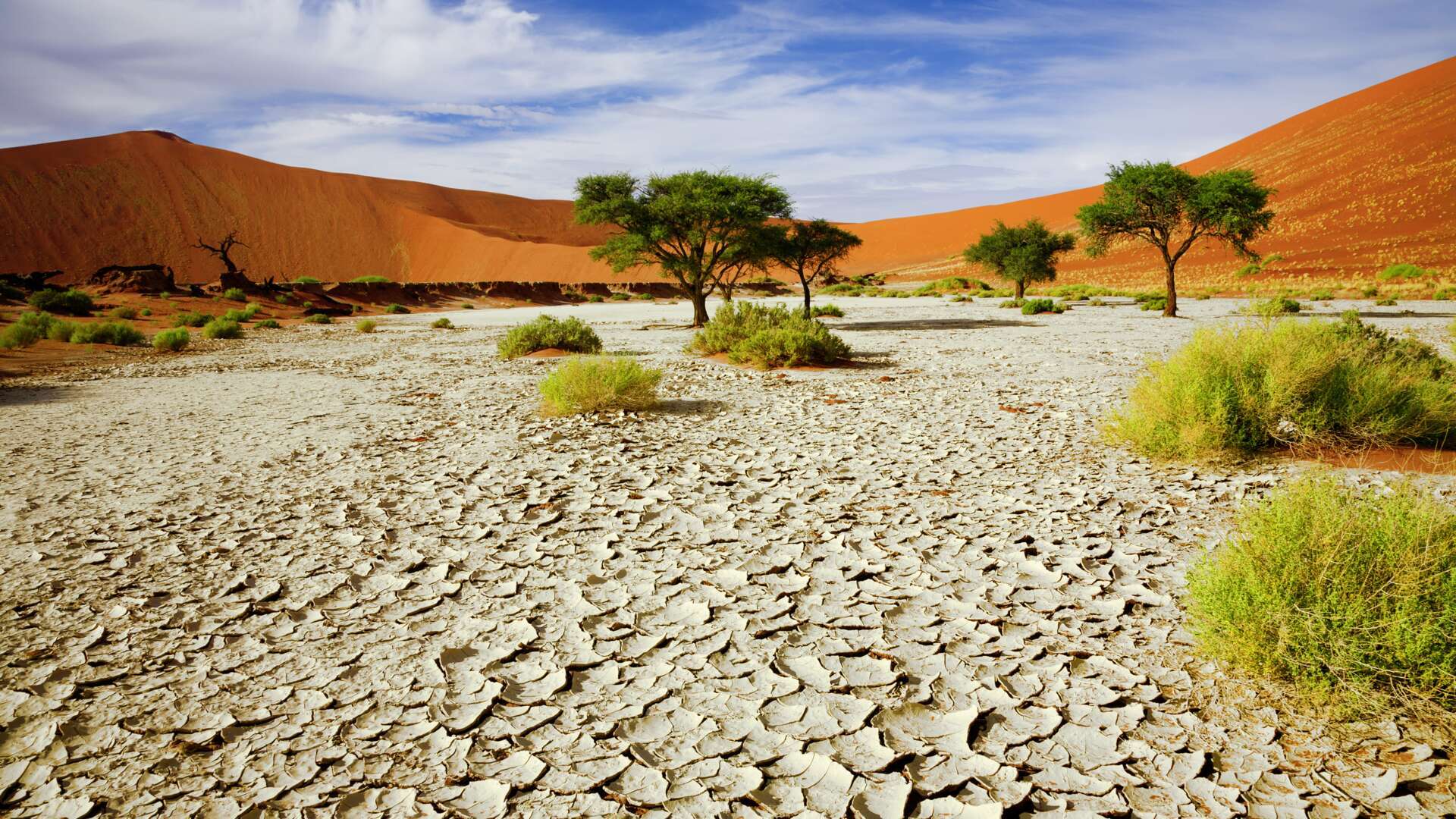
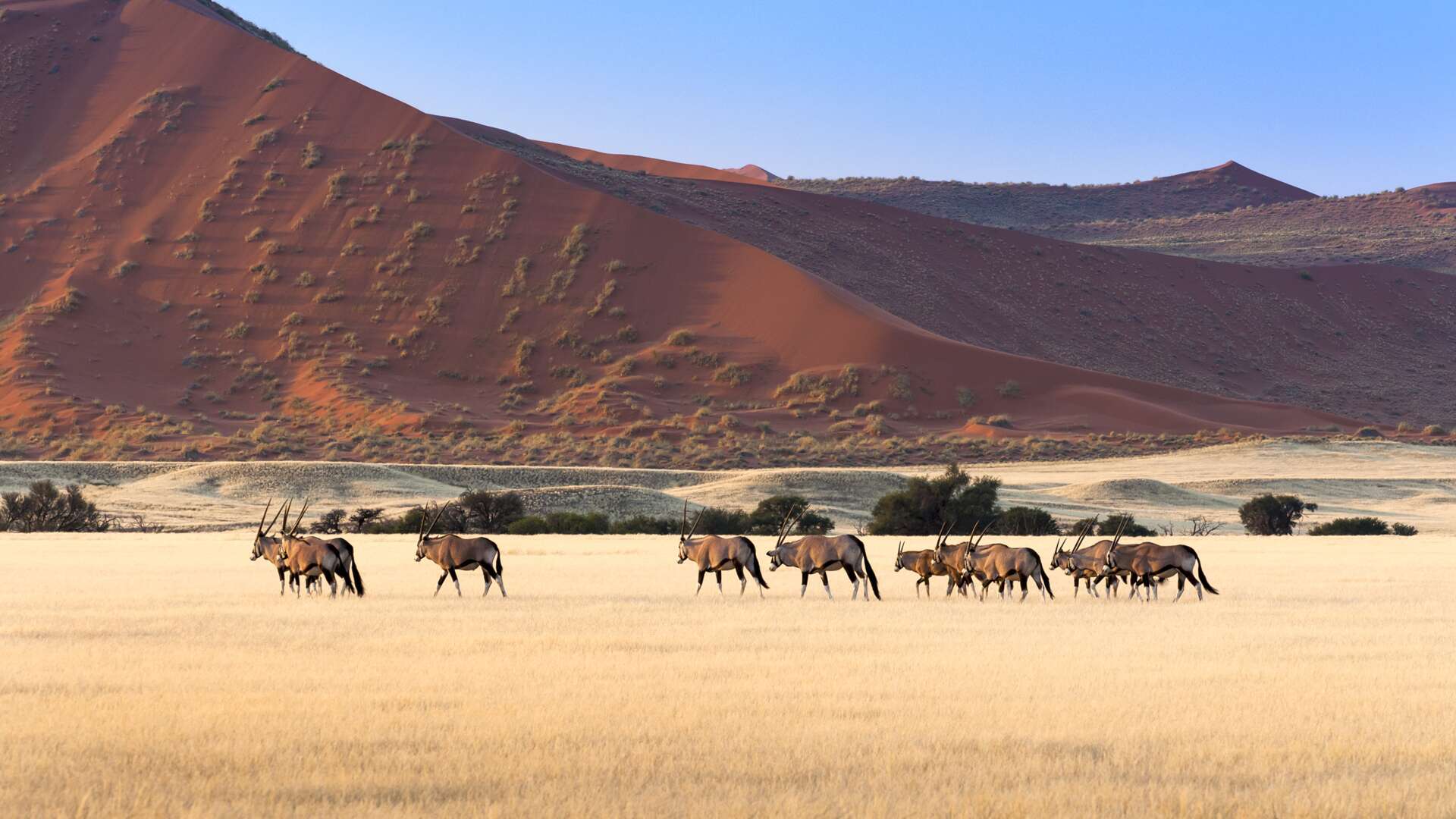
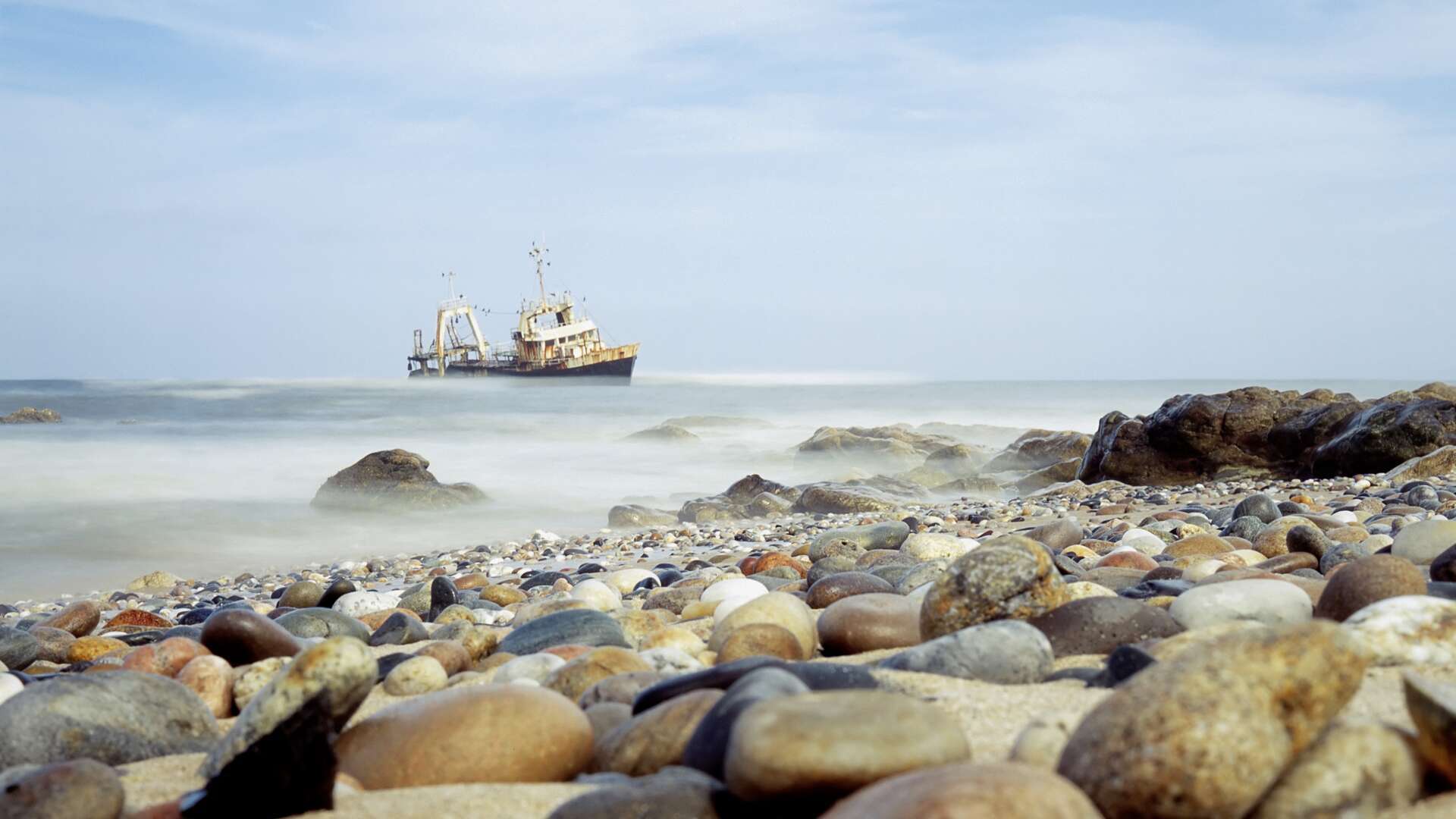
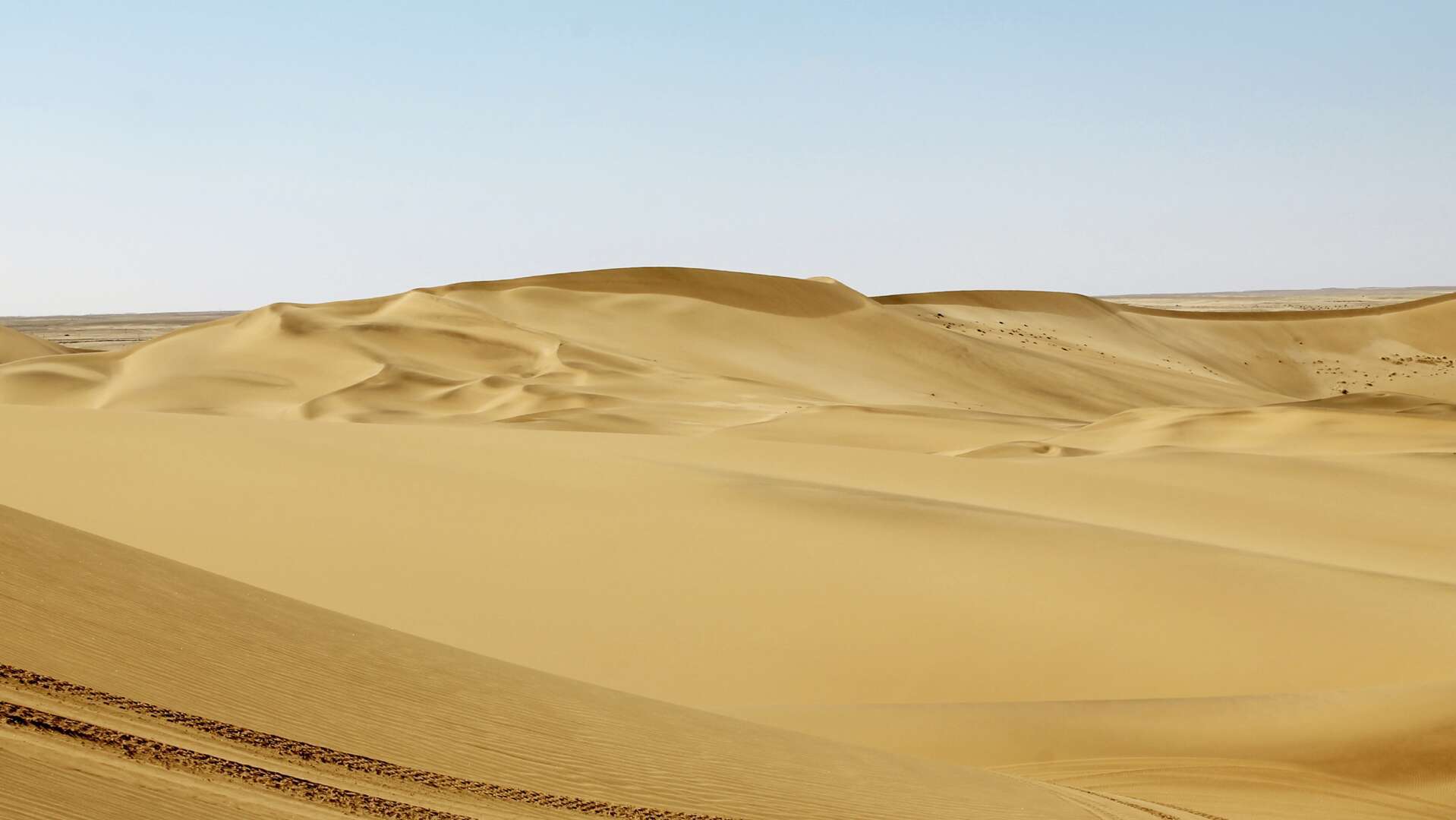
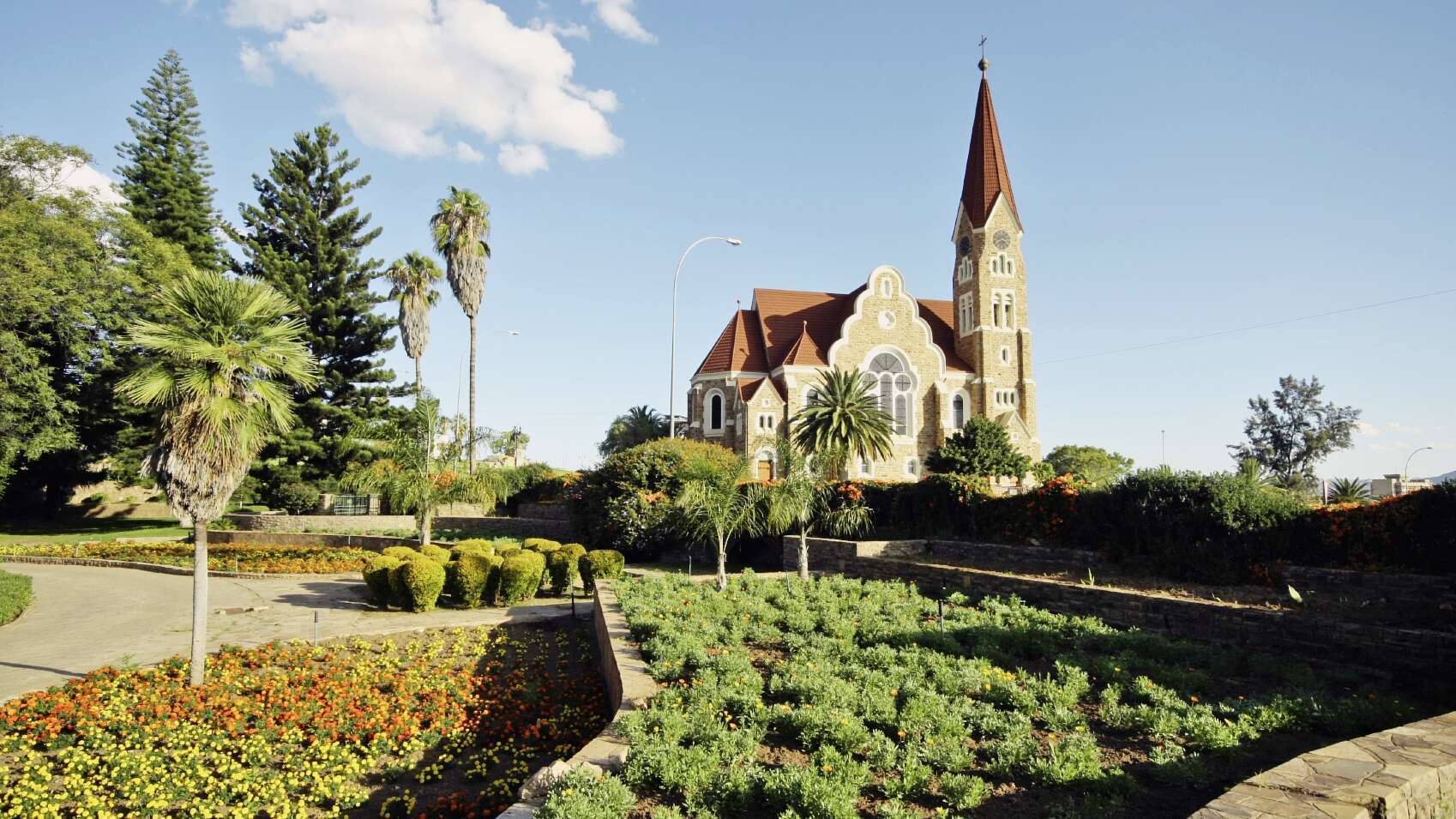
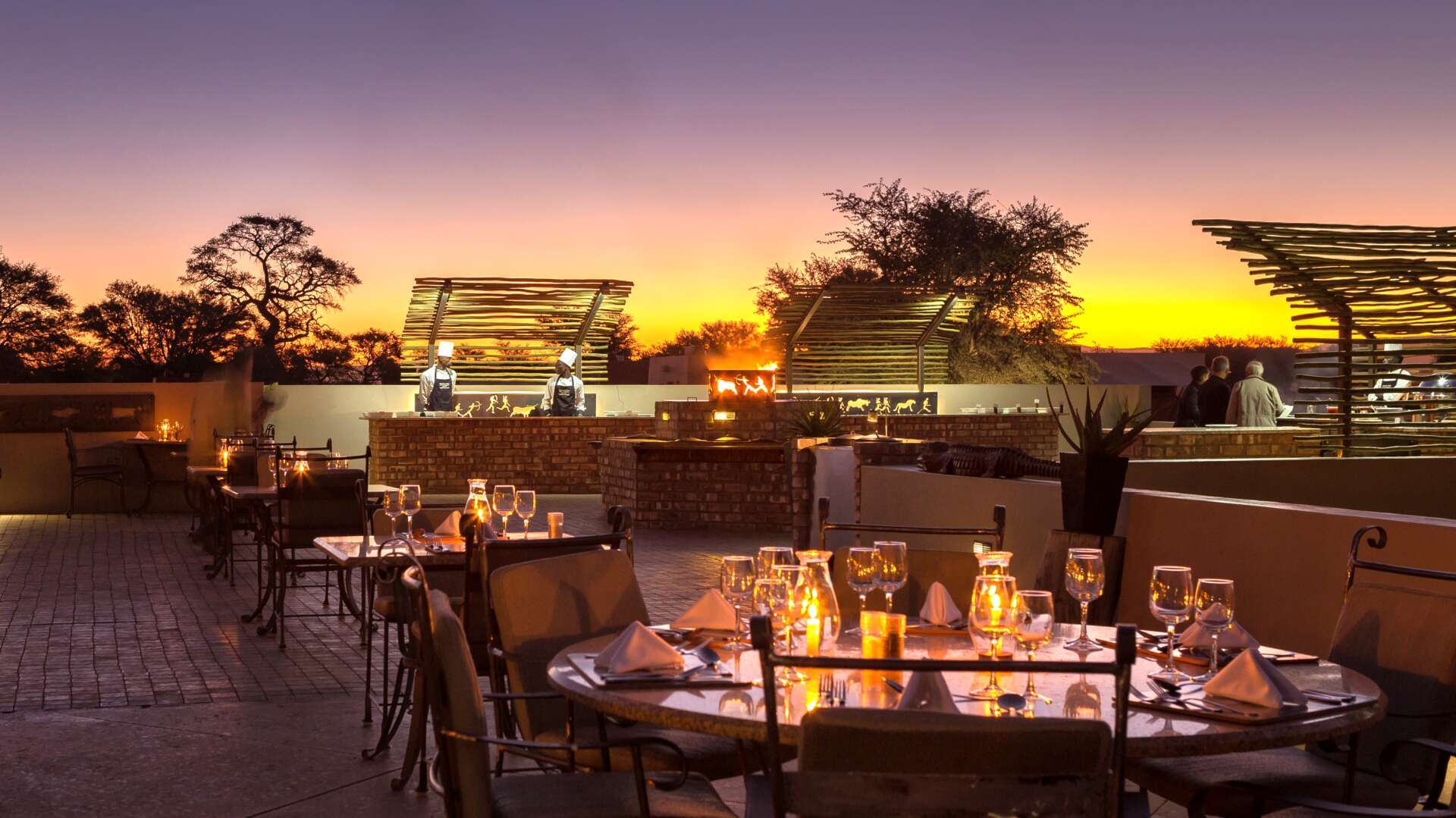
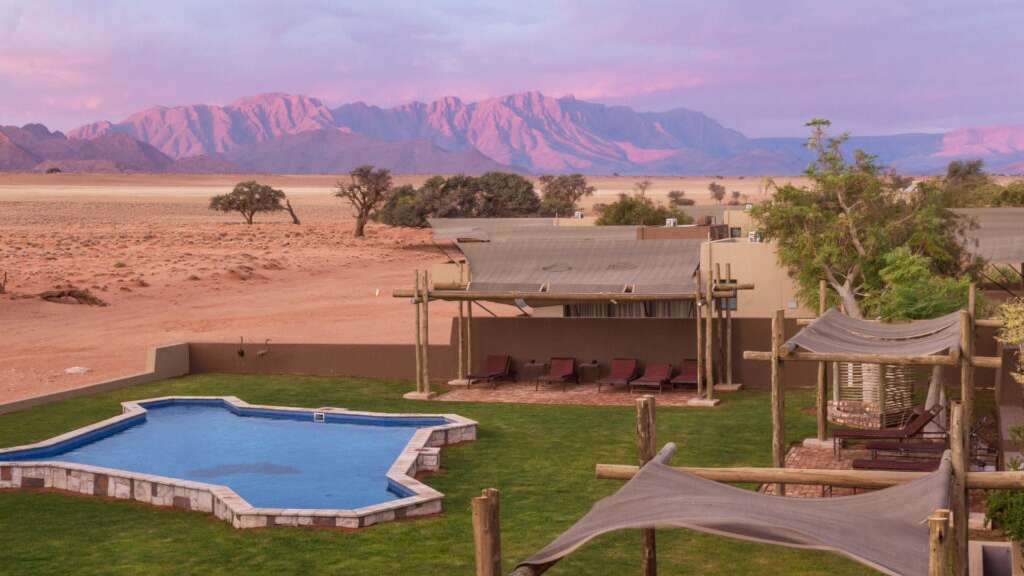
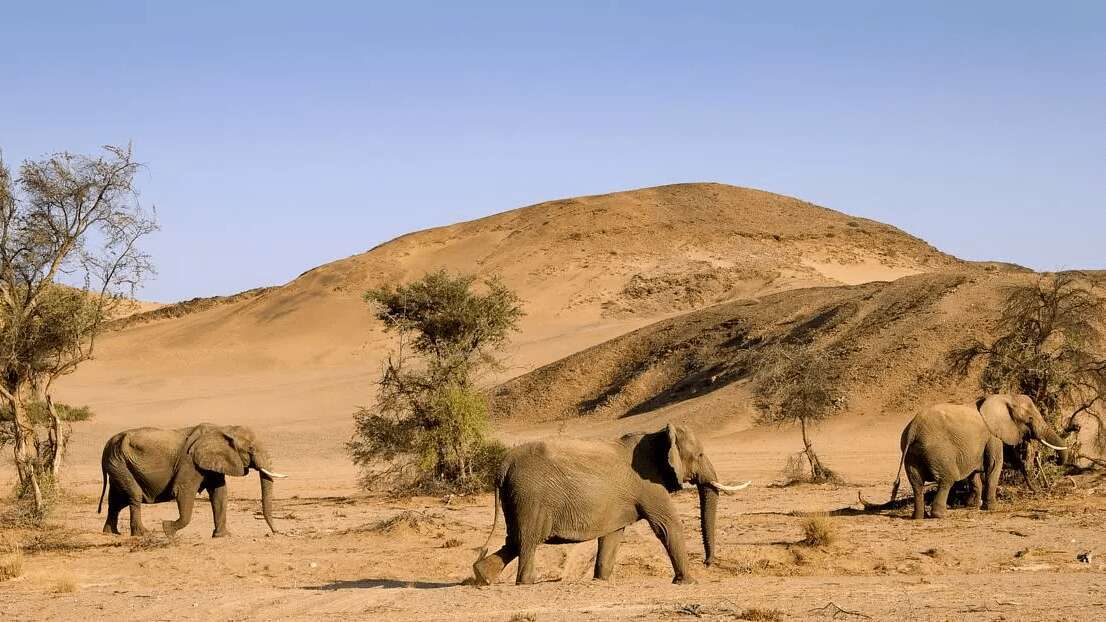
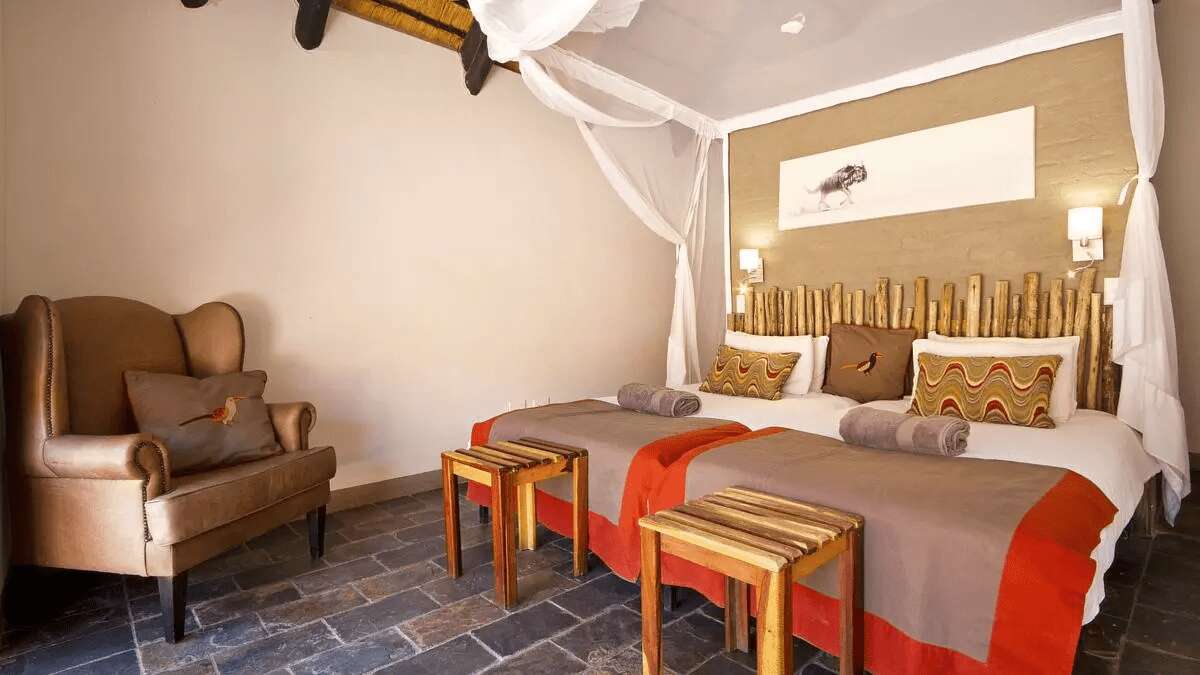
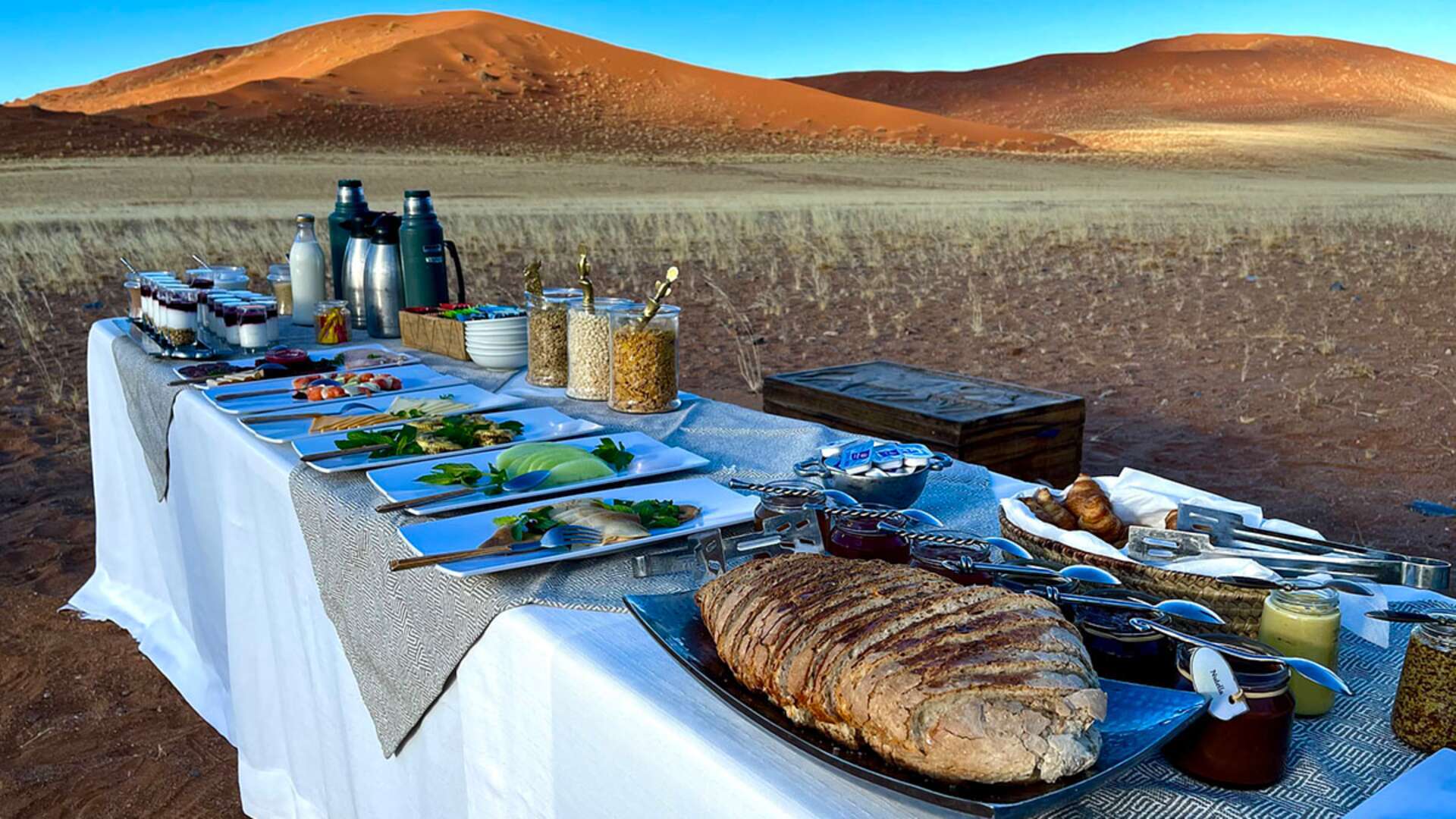
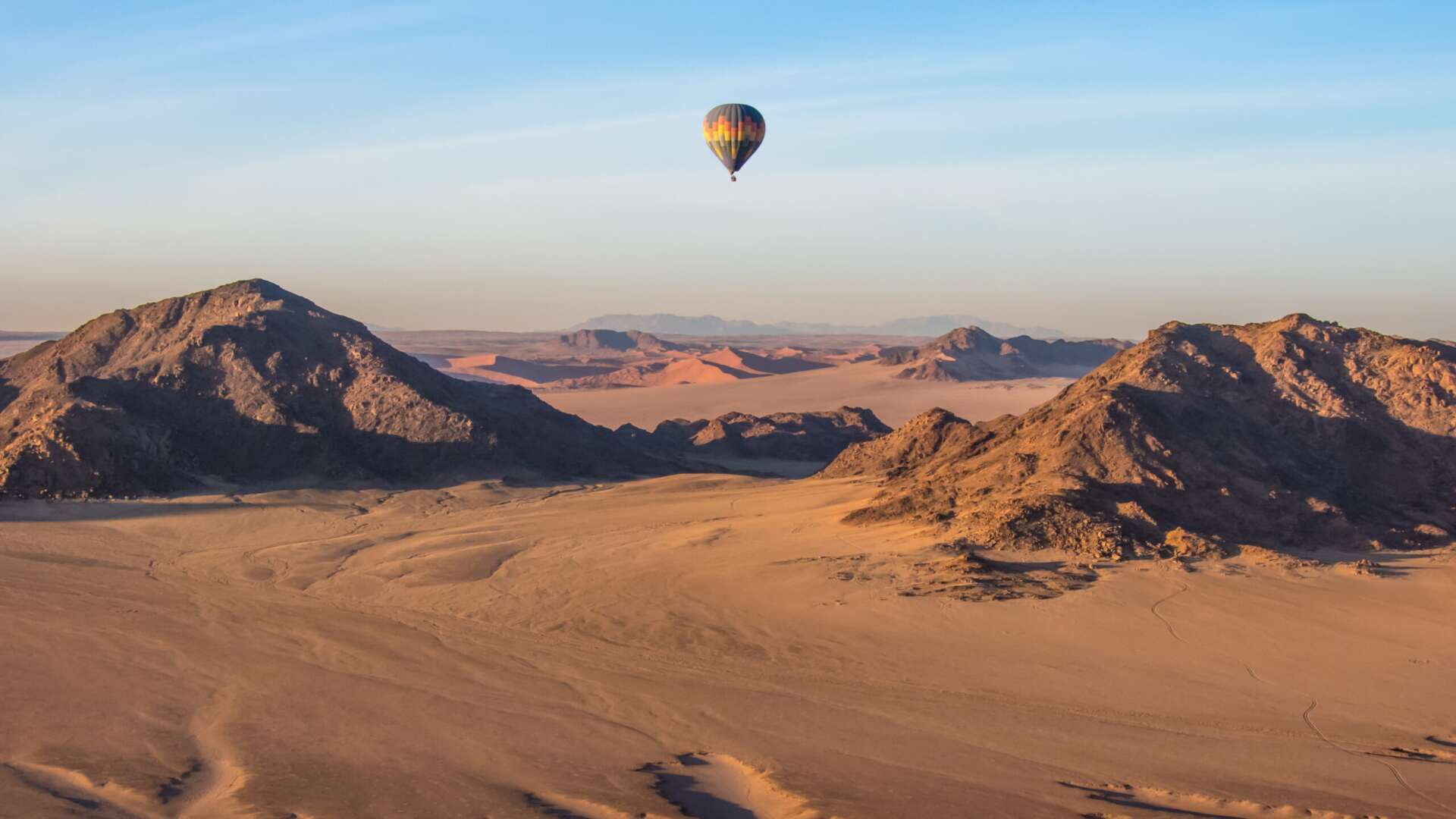
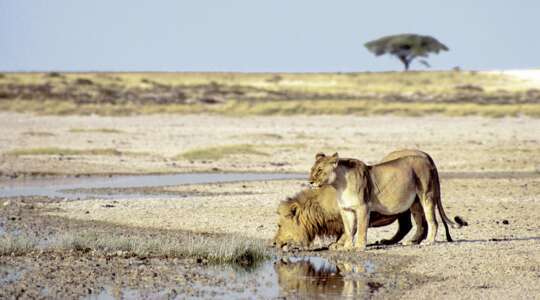
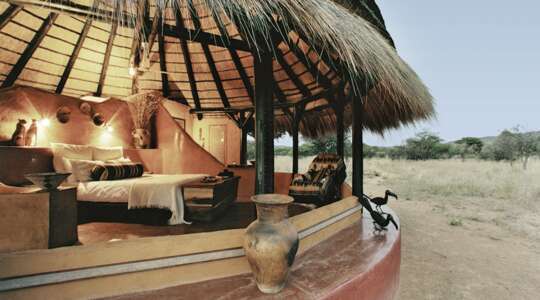
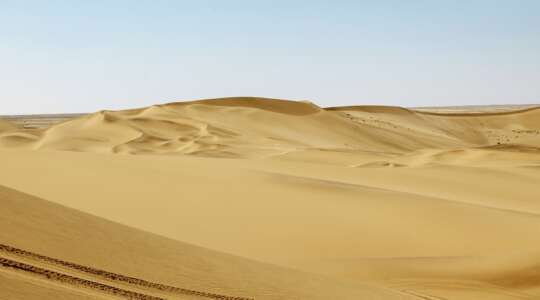
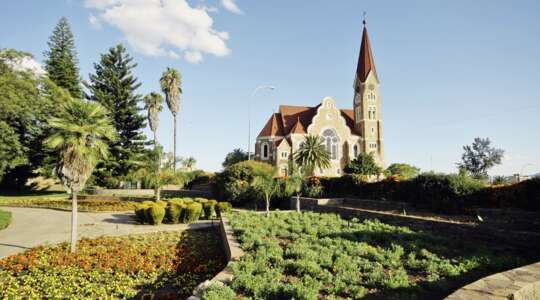
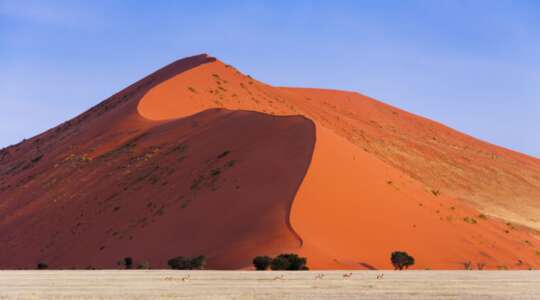

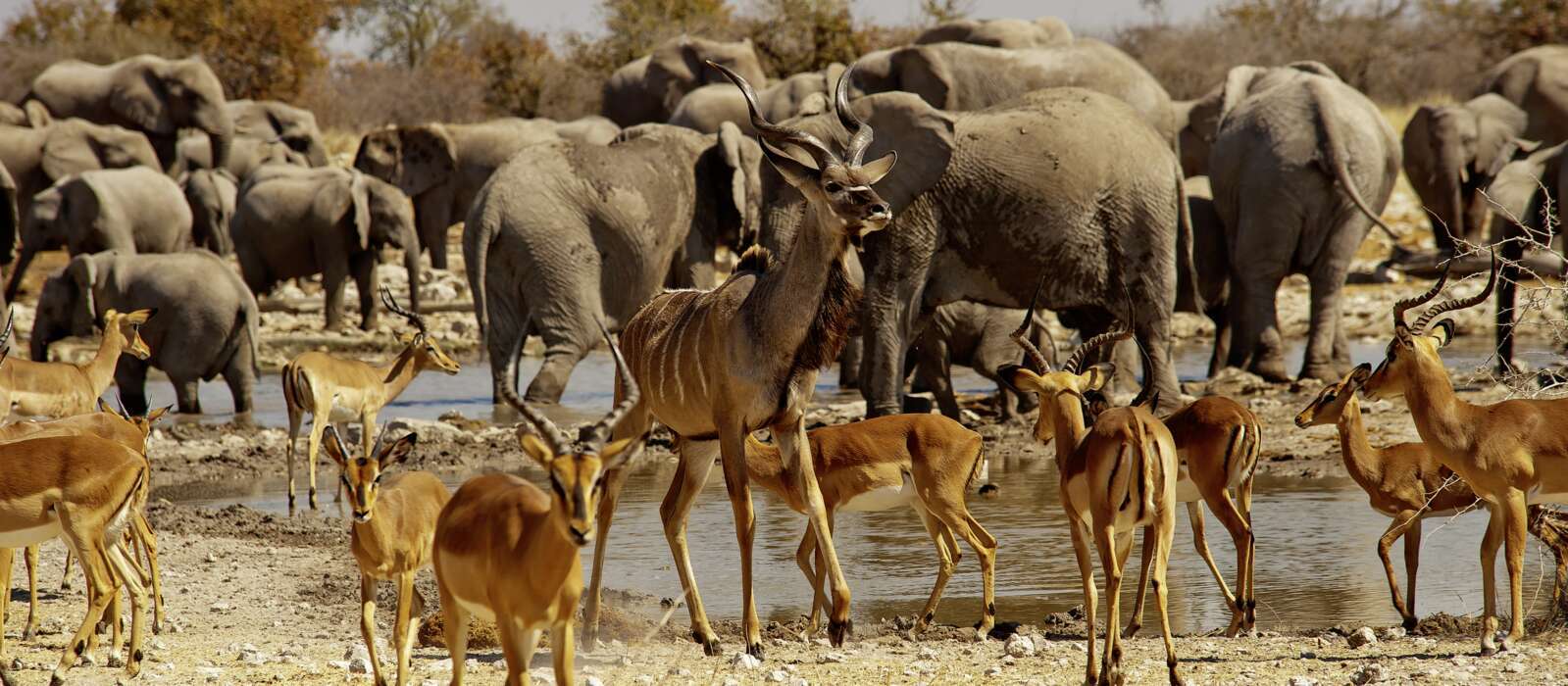
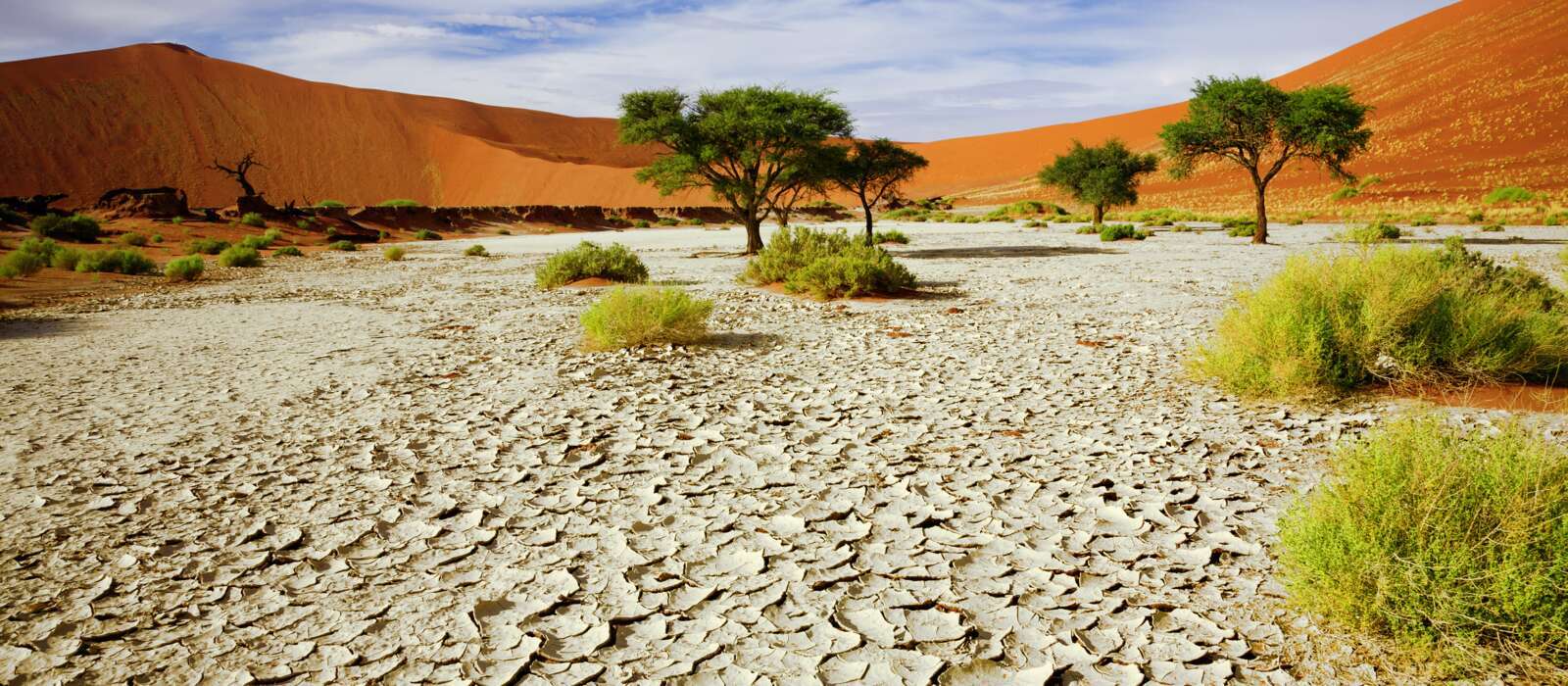
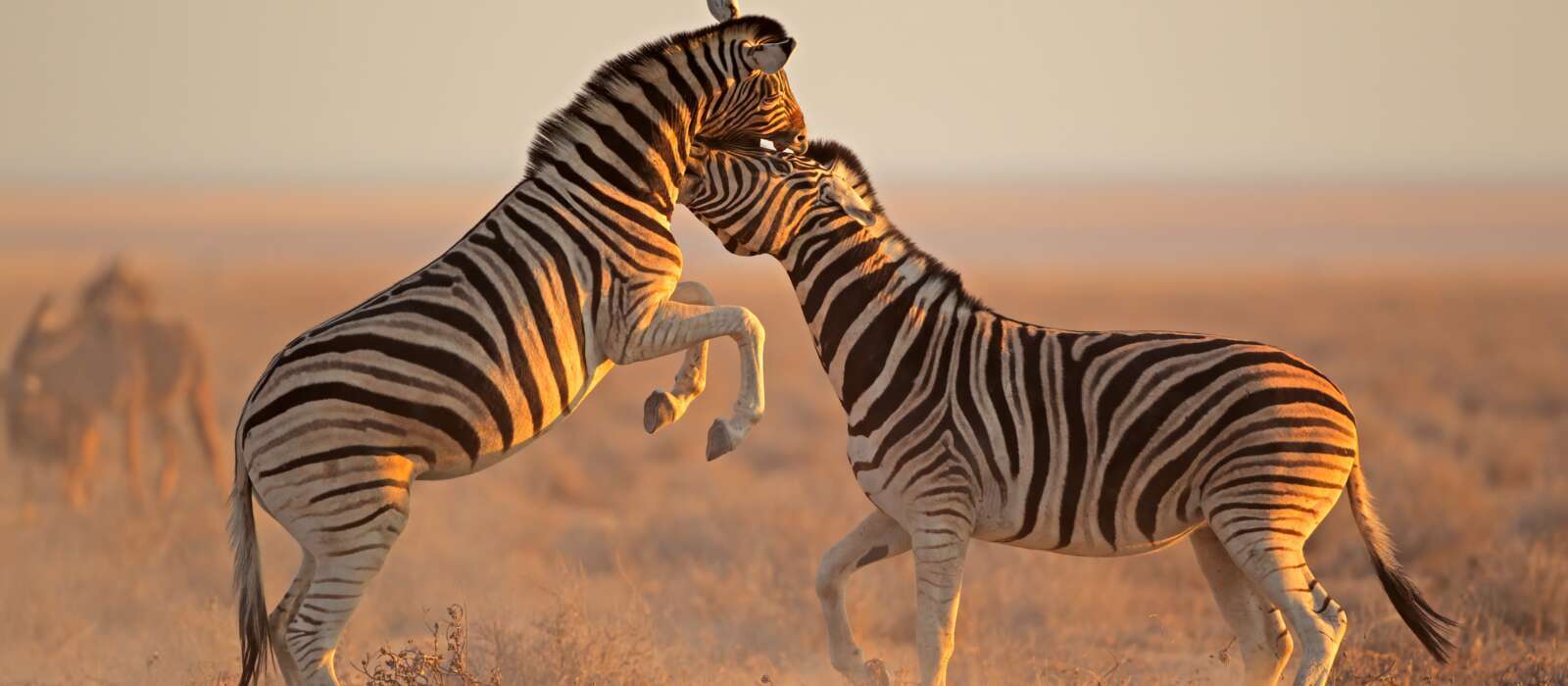
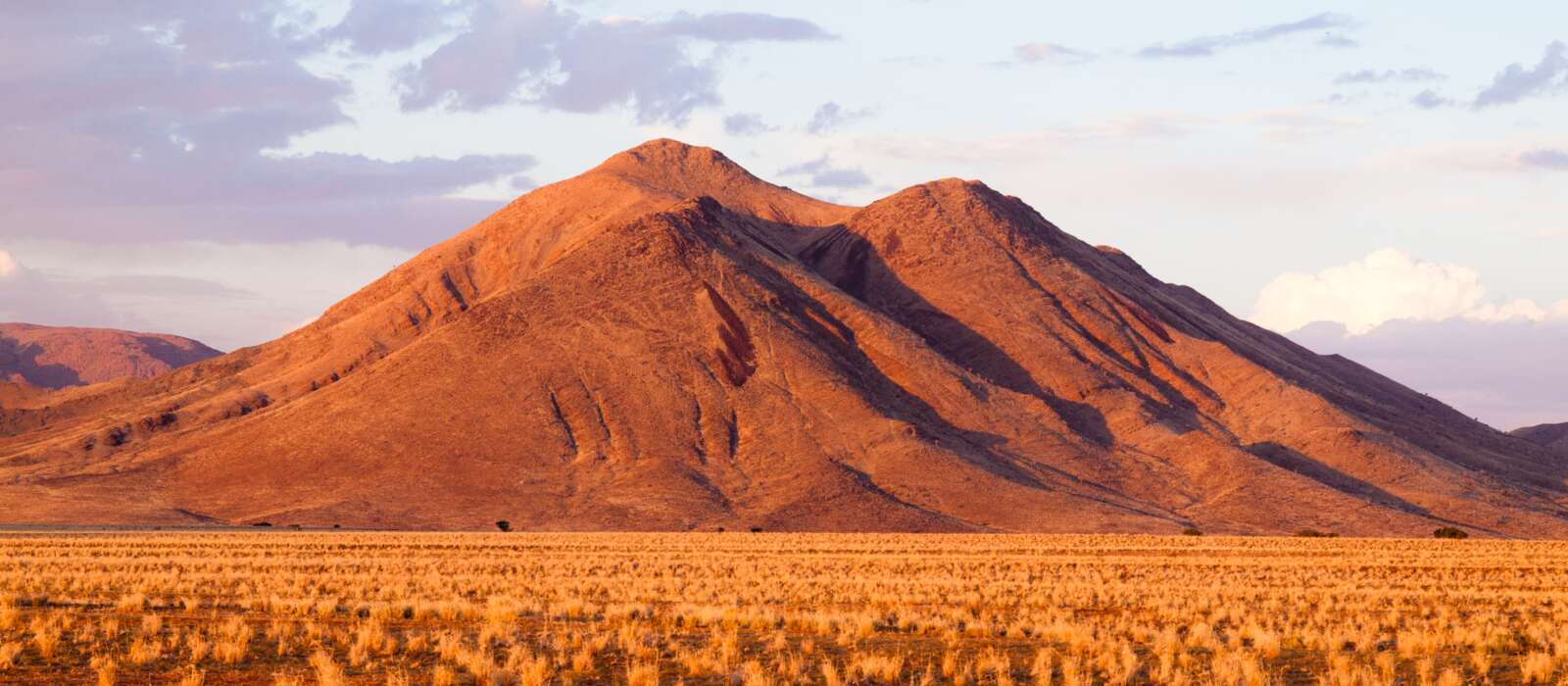

_w=24_h=25.png?v=95eb7919dd068bd9580f2851174449b79059ddc5)
_w=24_h=25.png?v=95eb7919dd068bd9580f2851174449b79059ddc5)
_w=24_h=25.png?v=95eb7919dd068bd9580f2851174449b79059ddc5)